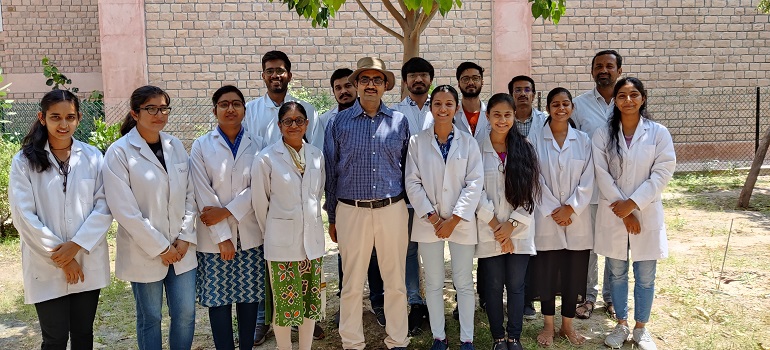The researchers at the Indian Institute of Technology Jodhpur have developed Lanthanides based perovskite nanocomposite catalytic materials for artificial photosynthesis to produce high-purity hydrogen.
In the patented method, the researchers used natural sunlight to convert water into hydrogen and oxygen using a highly recyclable catalyst based on low-cost, simple transition metal. Dr. Rakesh K Sharma, Associate Professor, Department of Chemistry, IIT Jodhpur, is the Principal Investigator of this project. Other team members involved in this research are Dr. Kiran Shejale (PhD Student), Dr. Devika Laishram (PhD Student), Mr. Bhagirath Saini (PhD Student) and Dr. Krishnapriya (Postdoctoral Researcher) at IIT Jodhpur.
The team has now developed a series of catalysts which can efficiently produce hydrogen under ambient conditions. The end application of this research lies in the industries, automobile and energy sectors.
Hydrogen-based energy is the only viable source for a green and sustainable future. More than 90% of the source of the hydrogen is from petroleum feedstock, making it costly and out of reach of the common man. IIT Jodhpur’s research team is working to find a viable source of hydrogen generation. The technology developed by the IIT Jodhpur team does not need any external energy source except sunlight.
Highlighting the significance of the research, Dr. Rakesh K Sharma, Associate Professor, Department of Chemistry, IIT Jodhpur, said, “Development of indigenous sustainable catalyst for large scale green hydrogen production is benchmark innovation for next generation happiness”.
The research team has screened more than 100 catalyst combinations to develop five sets of catalysts that give high hydrogen production under sunlight. The catalysts work for wastewater, saline water and brackish water. The catalysts are recyclable and can be used multiple times. Some of the salient features of this research are as follows:
· Number of Catalysts prepared and screened: 110 (Band gap ~ 2.1 eV)
· Total optimization steps: 19
· Hydrogen production Rate > 400 ml h-1 g-1 (pure hydrogen) at 0.02% catalytic loading.
· Lanthanide based catalytic systems gave best results.
· Continuous pure hydrogen production for 7.5hr
The process used is simple, works on a wide spectrum of sunlight, and does not require any energy source to produce hydrogen. Low cost and high purity could be an essential step towards using hydrogen as a fuel directly in vehicles avoiding fossil fuels and reducing pollution.
This novel research is being funded collaboratively by the Department of Science and Technology and IIT Jodhpur. Further, the researchers aim to develop a prototype followed by a scale-up for large-scale hydrogen production for end-user applications.

